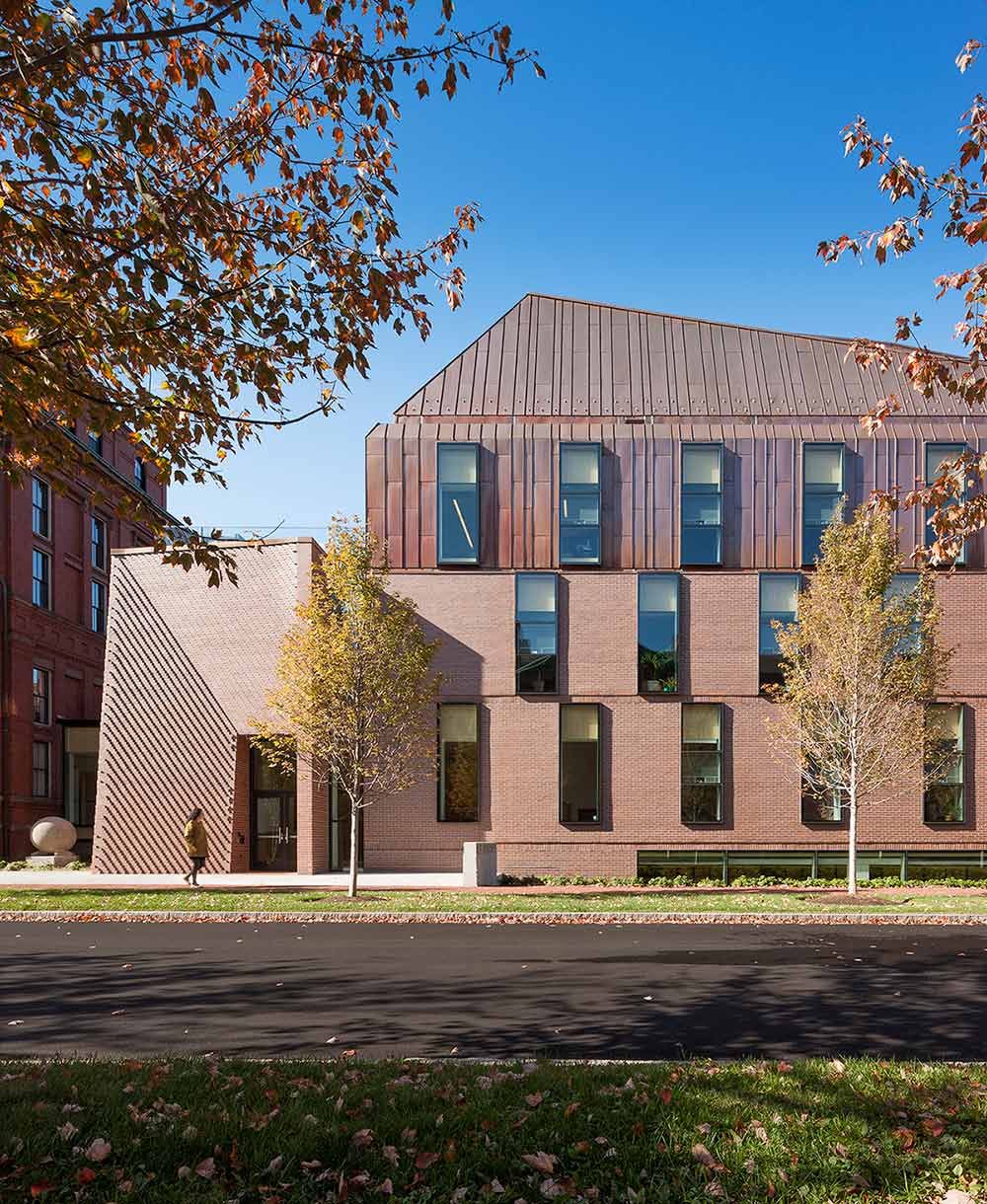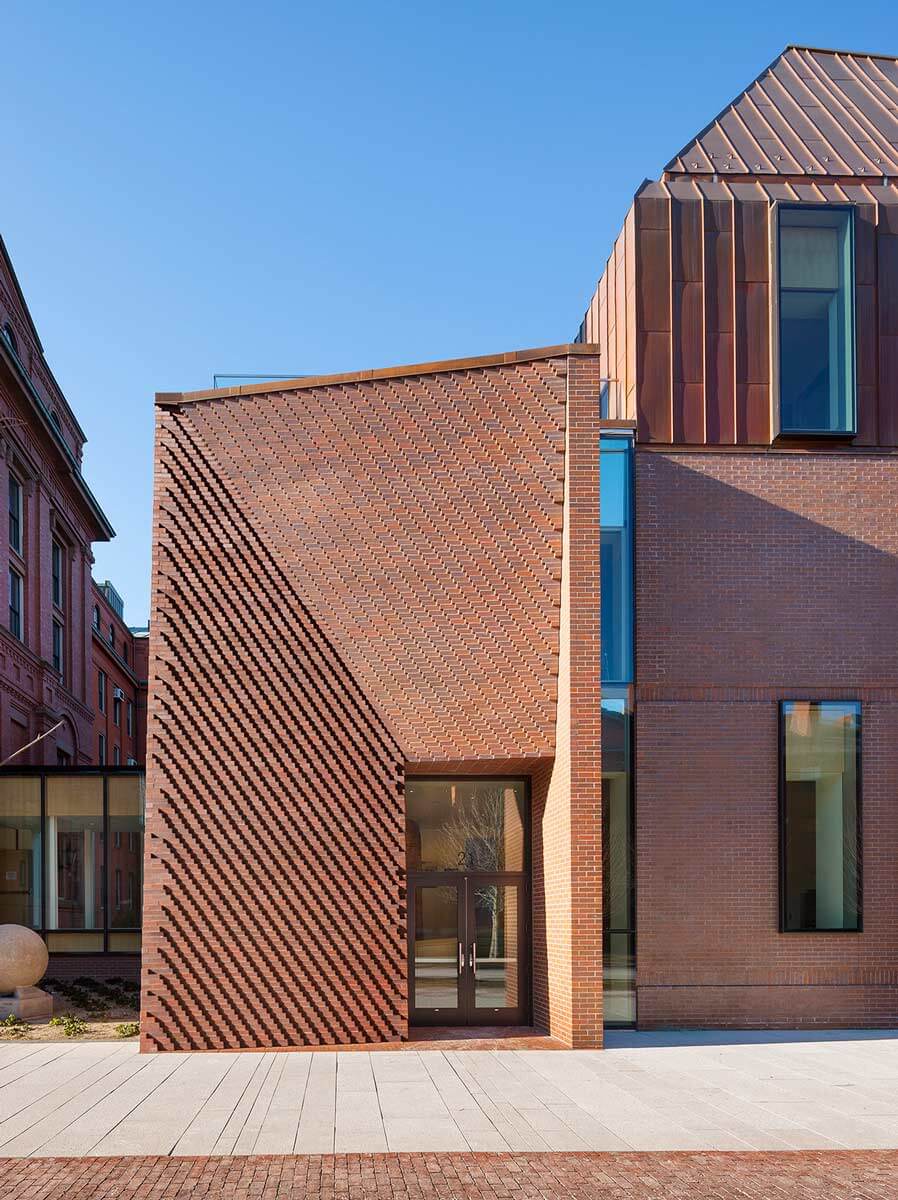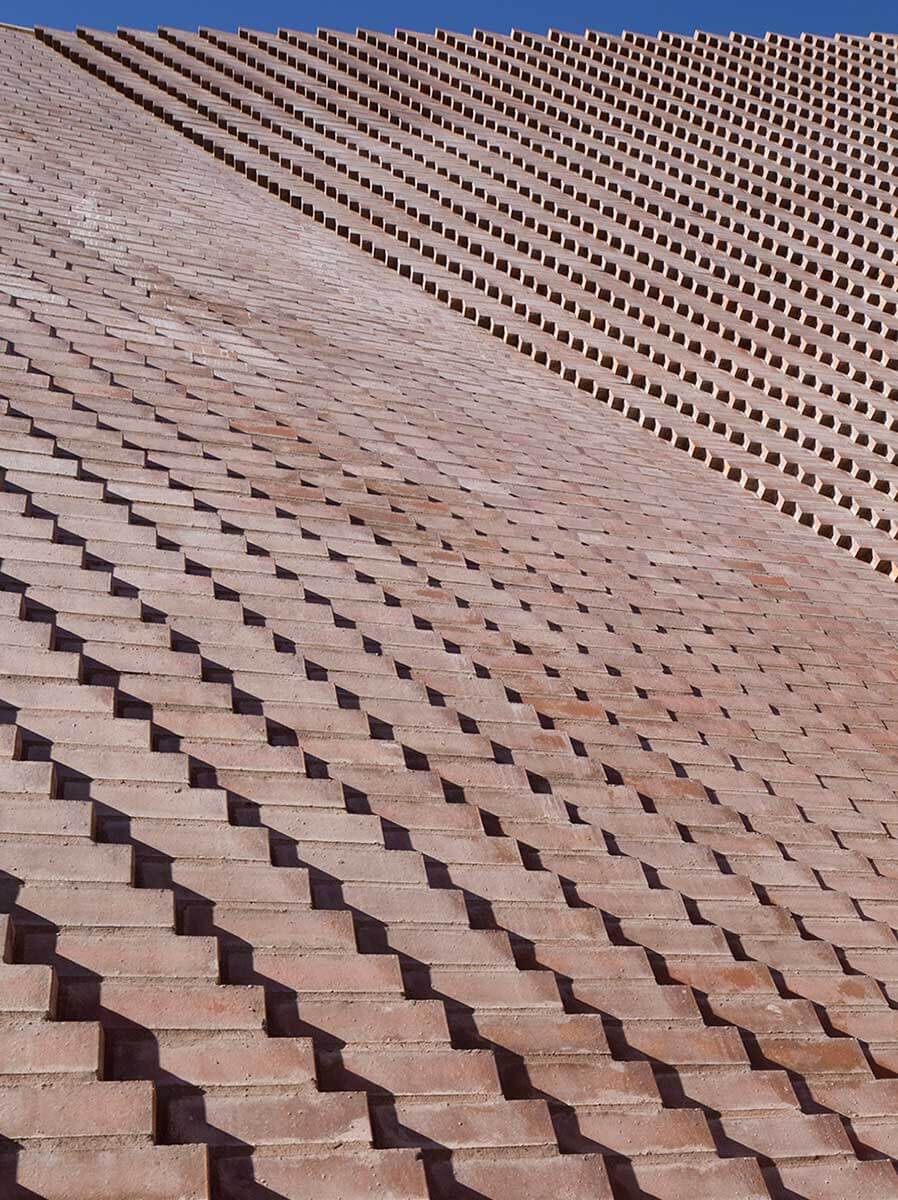Tozzer Anthropology Building / Kennedy & Violich Architecture
Tozzer Anthropology Building / Kennedy & Violich Architecture
Problem Overvew
As Modern era university buildings are aging across the world, they are unable to meet contemporary building codes, needs for weather tight envelopes, energy savings requirements and public access. At the same time, universities cannot dismiss the embodied energy and materials that went into these structures. This transformative adaptive re-use project uses an innovative brick envelope to create a distinctive new identity for Harvard’s Dept. of Anthropology. The design transforms the public presence and programs of Harvard University’s 1971 Tozzer Library while re-using the existing building’s foundation, campus infrastructure connections, and steel and concrete structure.
Project Surroundings and Design
The Tozzer Anthropology Building is sited in the Harvard Peabody Quadrangle, a complex of 19th century buildings grouped around a shared Courtyard. The design is sensitive to this historic architectural context characterized by well-crafted bearing wall brick envelopes. The design creates a new public entry on Divinity Avenue, and provides public access to the Peabody Museum and Courtyard. The new massing increases usable area by 29% with two stories of new construction under a large copper roof.
The roof volume rotates to capture daylight for a central light well which spatial relationships between floor levels and organizes the new classrooms, offices, artefact collections and collegial spaces for collaboration.
Sustainability Leadership
The design supports a contemporary Anthropology curriculum that amortizes embodied energy and saves operational energy. A durable brick envelope is paired with integrated passive and sustainable systems. The birch wood cladding panels of the light well are customized by design to reflect light and absorb sound, contributing to daylight autonomy in the public spaces. Interior finishes are minimal, the existing concrete slabs and structure are exposed. With natural ventilation and chilled beam cooling, the light well functions as a “lung” that circulates tempered air with an innovative energy-saving heat recovery system. The Tozzer Anthropology building meets and exceeds the LEED Gold Certification for environmental performance.
Choice of Brick
The original 1971 brick envelope could not be re-used due to mold and vapor barrier problems. The massing concept required two specific brick finishes: a smooth precise finish for the entry pavilion-- conceived as a sculpted “thick” brick--and a more irregular texture for the brick bands of the main volume. The 500 Harvard brick by the Kansas Brick company was selected for its versatility to meet these design criteria as it is made in wire cut and sand molded processes. The brick color was compatible with neighboring historic buildings without be imitative. The brick’s manganese iron spot added a metallic sheen to the brick surface which reflected the copper on the building’s roof volume.
BrickEnvelopeInnovation
The main building volume is wrapped by taught, thin brick bands which express (and are relieved off) the existing slabs. Vertical expansion joints are staggered between floor levels while horizontal expansion joints occur behind recessed solider courses. The structurally glazed windows, installed prior to the masonry, are tied to the air-vapor barrier via silicone flashing and a continuous dart edge locked into the window frame channels with sealant, ensuring an air-tight connection to the wall.
For the entry pavilion, the design invents a digital brick corbel detail that transforms a standard 6” brick veneer cavity-wall construction. The 30' brick entry has no control joints or relieving angles, just one custom-designed loose lintel set above the hung brick ceiling. Each brick is linked by design to the global geometry of the entry pavilion. Using software created by the design team specifically for this project, the brick corbelling was tested digitally and empirically. The brick envelope design process benefited greatly from close collaboration with local brick masons, who fabricated dry and wet stack brick wall prototypes. With a brick pattern that is directly tied to the building massing geometry, the design embodies a high quality of digital and traditional craft. With a play of “thick” and “thin” surfaces, the Tozzer Anthropology building creates a contemporary and enduring brick architecture that speaks to the layered brick depth of the historic Peabody Quadrangle.
Extra info
| Lead Architects: | Frano Violich, FAIA; Managing Principal Sheila Kennedy, FAIA; Principal Consulting on Design Frano Violich, FAIA; Managing Principal Sheila Kennedy, FAIA; Principal Consulting on Design Veit Kugel Dipl Ing, Senior Associate; Project Designer J. Seth Hoffman, LEED AP; Project Manager |
| Project Team: | KVA Design Team: Justin Hui, Jungmin Nam, Charles Garcia, Daniel Sullivan, Alda Black, Alex Shelly, Blair Cranston, Ben Widger, Kyle Altman Structural Engineer Roof: Schlaich Bergermann & Partner LP Marine Structural & Civil Engineer: McLaren Engineering Group MEP Engineer: Lakhani & Jordan Engineers Security: Cosentini Associates Landscape Architect: Ken Smith Landscape Architects Interaction Design: Small Design Firm, Inc Construction: Hudson Meridian Construction Group; D’Onofrio General Contractors Corp. |
| Completion date: | 2012 |


















